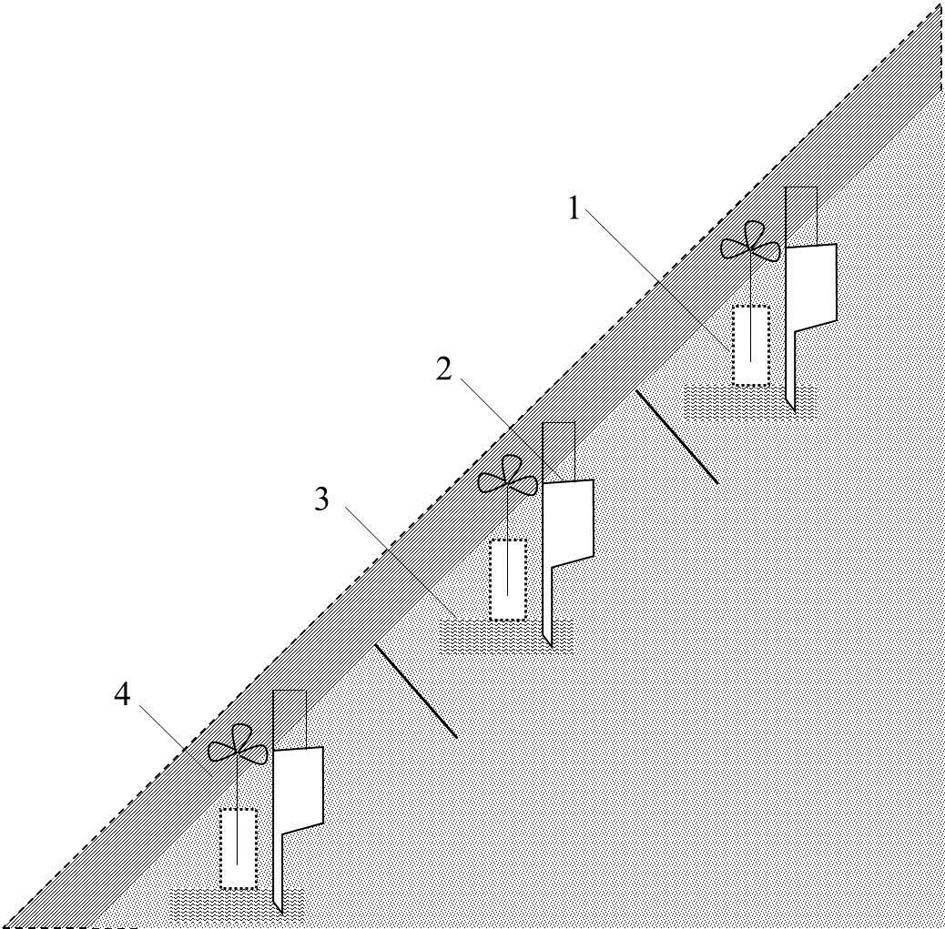A greening method suitable for sandy steep slopes in high-altitude areas
A high-altitude, sandy land technology, applied in the field of sandy land greening in high-altitude areas, can solve problems such as inapplicability, and achieve the effects of reducing the probability of landslides, reducing water evaporation, good air structure and water retention capacity
- Summary
- Abstract
- Description
- Claims
- Application Information
AI Technical Summary
Problems solved by technology
Method used
Image
Examples
Embodiment 1
[0026] A greening method suitable for sandy steep slopes in high-altitude areas, comprising the following steps:
[0027] (1) Excavate planting holes on the steep slope of the sandy land to be greened. The planting holes are along the contour line of the slope. The depth and diameter of the excavation are determined according to the size of the planted seedlings, and the horizontal and vertical distances between adjacent planting holes are 1m.
[0028] (2) Coconut bran is laid at the bottom of the planting hole, the decomposition degree of the coconut bran is medium, and the laying thickness is 10cm.
[0029] (3) The planting seedlings are planted in the planting hole, and the planting seedlings are plant seedlings cultivated with non-woven seedling bags in the nursery room, and sea buckthorn is selected for planting according to the climatic conditions of the area where the sandy land to be treated is located.
[0030] (4) Fix the intercepting water storage tank above the pla...
Embodiment 2
[0035] A greening method suitable for sandy steep slopes in high-altitude areas, comprising the following steps:
[0036] (1) Excavate planting holes on the steep slope of the sandy land to be greened. The planting holes are along the contour of the slope. The depth and diameter of the excavation are determined according to the size of the planted seedlings, and the horizontal and vertical distances between adjacent planting holes are 1.5m.
[0037] (2) Coconut bran is laid at the bottom of the planting hole, the decomposition degree of the coconut bran is medium, and the laying thickness is 12.5cm.
[0038] (3) Planting the planting seedlings in the planting hole, the planting seedlings are plant seedlings cultivated with non-woven seedling bags in the nursery room, and according to the climatic conditions of the area where the sandy land to be treated is located, the sand jujube is selected for planting.
[0039] (4) Fix the interception water storage tank above the planted ...
Embodiment 3
[0044] A greening method suitable for sandy steep slopes in high-altitude areas, comprising the following steps:
[0045] (1) Excavate planting holes on the steep slope of the sandy land to be greened. The planting holes are along the contour of the slope. The depth and diameter of the excavation are determined according to the size of the planted seedlings, and the horizontal and vertical distances between adjacent planting holes are 2m.
[0046] (2) Coconut bran is laid at the bottom of the planting hole, the degree of decomposition of the coconut bran is medium, and the laying thickness is 15cm.
[0047] (3) Planting the planting seedlings in the planting hole, the planting seedlings are plant seedlings cultivated with non-woven seedling bags in the nursery room, and according to the climatic conditions of the area where the sandy land to be treated is located, Haloxylon chinensis is selected for planting.
[0048] (4) Fix the intercepting water storage tank on the top of t...
PUM
 Login to View More
Login to View More Abstract
Description
Claims
Application Information
 Login to View More
Login to View More - R&D Engineer
- R&D Manager
- IP Professional
- Industry Leading Data Capabilities
- Powerful AI technology
- Patent DNA Extraction
Browse by: Latest US Patents, China's latest patents, Technical Efficacy Thesaurus, Application Domain, Technology Topic, Popular Technical Reports.
© 2024 PatSnap. All rights reserved.Legal|Privacy policy|Modern Slavery Act Transparency Statement|Sitemap|About US| Contact US: help@patsnap.com









